As kings of England go, it’s fair if Edward the Confessor doesn’t immediately spring to mind.
After all, he did reign almost 1000 years ago!
But there are lots of interesting things to discover about this monarch, from the story of a sapphire to the building of famous London landmarks.
In this not-so-romantic blog, we’ll look at some fun facts about Edward the Confessor.
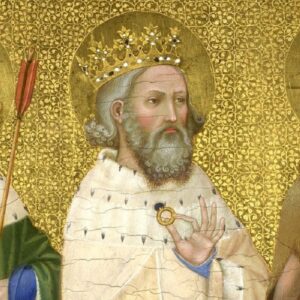
ONE OF THE LAST ANGLO-Saxons
Edward reigned as King of England for 24 years, between 1042 and 1066, and was one of the last Anglo-Saxon kings – the second-to-last, to be specific.
In fact, it was because of Edward that the reign of the Anglo-Saxons was brought to an end in 1066 with a famous battle. We’ll find out more later …
HE SPENT 25 YEARS IN EXILE
During his childhood, England was a dangerous place under constant threat of invasion, particularly from the Vikings.
When Sweyn Forkbeard, a Danish king, stole the throne from Edward’s father, Æthelred the Unready, the family fled to Normandy.
Edward spent 25 years away from home before eventually returning to England to become king.
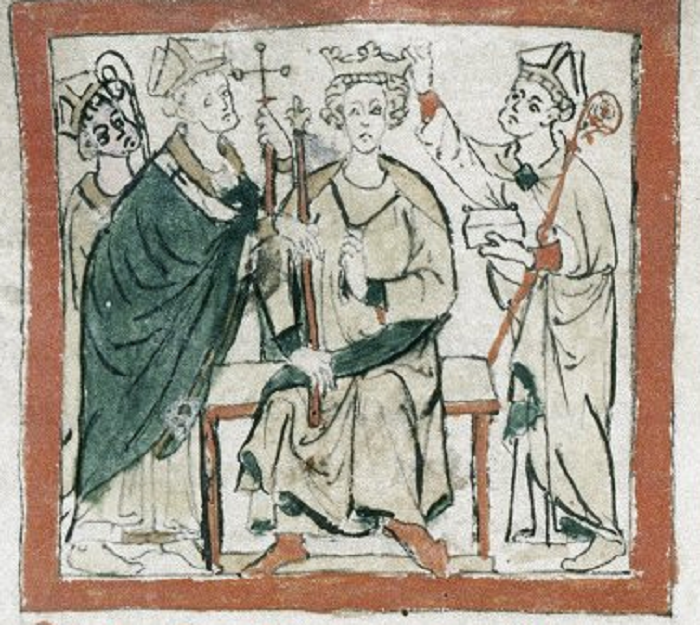
the eighth son
Edward was the eighth son. Yes, he had seven older brothers!
So how did he end up becoming king?
Back then the throne didn’t just pass to the eldest child like it does today. There were other things to consider, like how much support someone had.
Edward had the backing of the people and was chosen to be king by a royal council called the Witan.
HE BUILT WESTMINSTER ABBEY …
Edward made a promise that if he ever returned to England as king, he would thank God by making a pilgrimage – a special journey to a holy place.
However, when he did become king, he realised this would leave his throne unprotected and up for grabs by the Vikings!
The Pope (the head of the Catholic church) said that Edward didn’t need to leave England, as long as he built a new church. Edward happily obliged, and this church became known as Westminster Abbey.
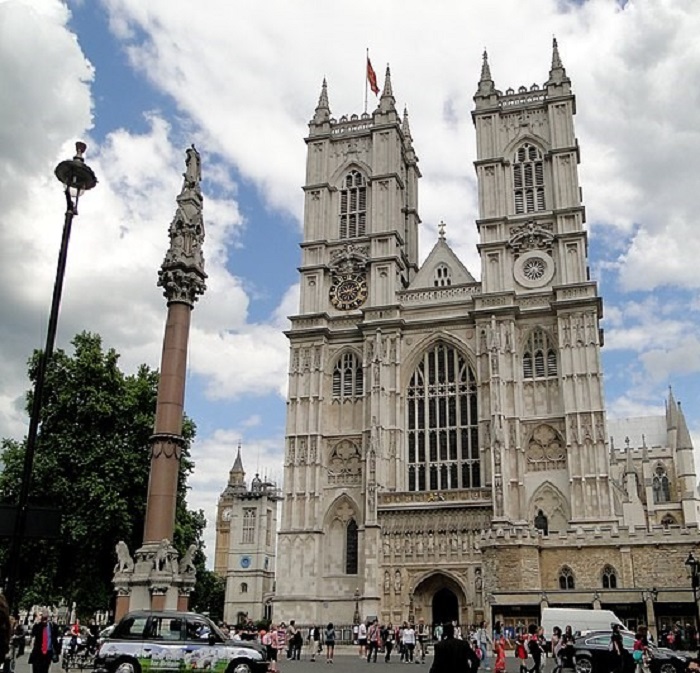
Most of Edward’s Abbey was later knocked down, but some parts of it do still remain.
Today, we know Westminster Abbey as a royal church where every monarch is crowned, and where 30 kings and queens are buried … including Edward the Confessor himself.
Edward died just a few days after the Abbey was finished, and he was buried in his church. His funeral can even be seen on the Bayeux Tapestry.

… AND THE PALACE OF WESTMINSTER
Around the time he built Westminster Abbey, Edward also built a palace next door.
The Palace of Westminster was a royal residence for over 400 years, until the time of Henry VIII. You might remember him best for having six wives.
(This is quite funny if I tell you that Edward the Confessor is the patron saint of difficult marriages).
Nowadays we probably know the building on this site by a more familiar name … the Houses of Parliament!
Did you know that Edward was the person behind two of London’s most famous buildings?
HE IS A SAINT
About 100 years after he died, Edward was made a saint.
A saint is a person thought to be very holy and close to God.
It was claimed that Edward could perform miracles – extraordinary events that can’t be explained. In Edward’s case, that he could heal people with his touch.

In the past, people who were sick would make pilgrimages to Westminster Abbey and the special shrine where Edward is buried to pray for healing.
In fact, some people still do this today, in particular during a period called Edwardtide, which is in October every year.

King Edward the Confessor is therefore also known as Saint Edward the Confessor.
He is the only king of England to have been made a saint by the Pope (the head of the Catholic Church).
He even used to be the country’s patron saint until Edward III replaced him with St George, who slayed the dragon. Poor Edward.
Also, a ‘confessor’ is a type of saint who suffers for their faith by resisting worldly temptations. For example, despite being a king, Edward didn’t splash the cash.
And that leads onto our next fact …
THE STORY OF A SAPPHIRE
Edward was known as a kind man who helped the poor as well as the sick.
In one story, he was riding in Essex when a beggar asked him for alms (money given to the poor). The king didn’t have any money, so he removed a sapphire ring and gave this to the man instead.
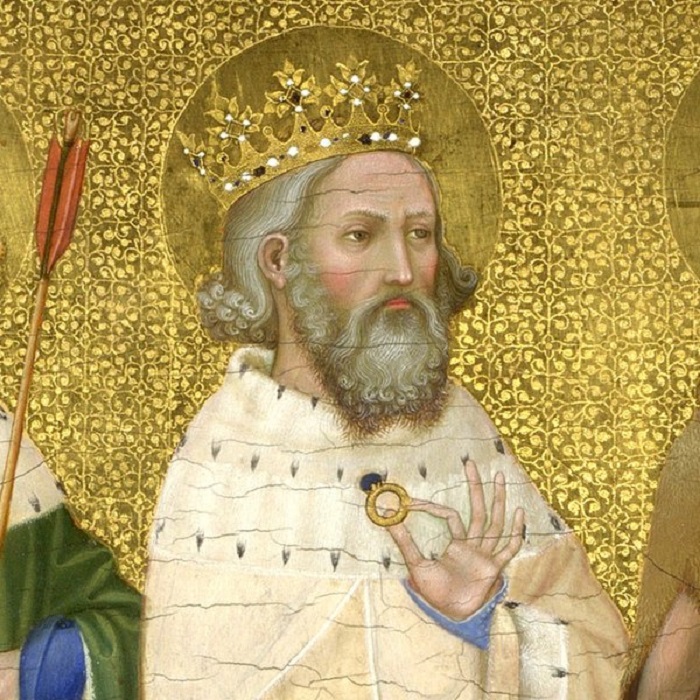
A few years later, two English travellers in the Holy Land became lost and were helped by an old man.
The man told them he was St John the Evangelist (a follower of Jesus).
He was carrying the ring that Edward had given to the beggar. He asked the travellers to return it to the king and to pass along the message that they would soon meet in heaven …
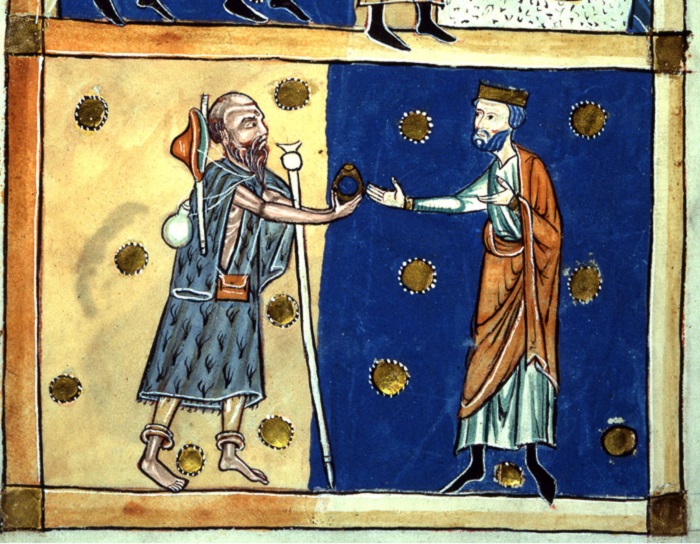
I wonder what Edward made of that!
This ring became Edward’s personal symbol and he is often shown holding it.
It was kept in Westminster Abbey’s collection of treasures but unfortunately, they all disappeared, so the ring was lost …
Or was it?
According to another story, Edward’s sapphire is actually on top of the Imperial State Crown. This is the crown used by the monarch for important state occasions and is part of the Crown Jewels kept at the Tower of London.
Could this be true? What do you think?
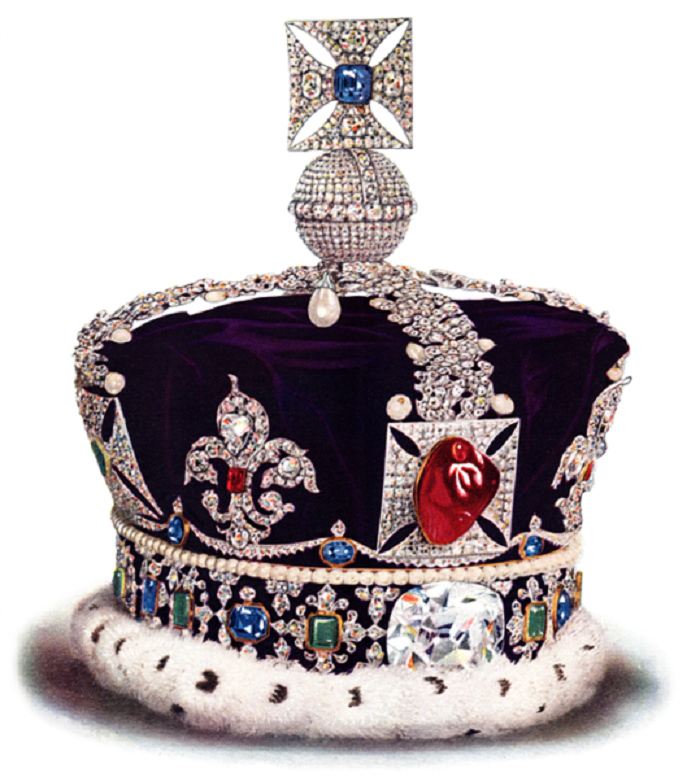
coronation objects are named after him
Speaking of treasure, the monks (holy men) of Westminster Abbey said that Edward had asked them to look after his crown, for use at all future coronations.
Unfortunately, however, it was destroyed during the English Civil War.
So, when a new crown was made in 1661 to replace the lost one, it was named St Edward’s Crown, after Edward the Confessor.
This is the crown now used during the coronation of British monarchs.
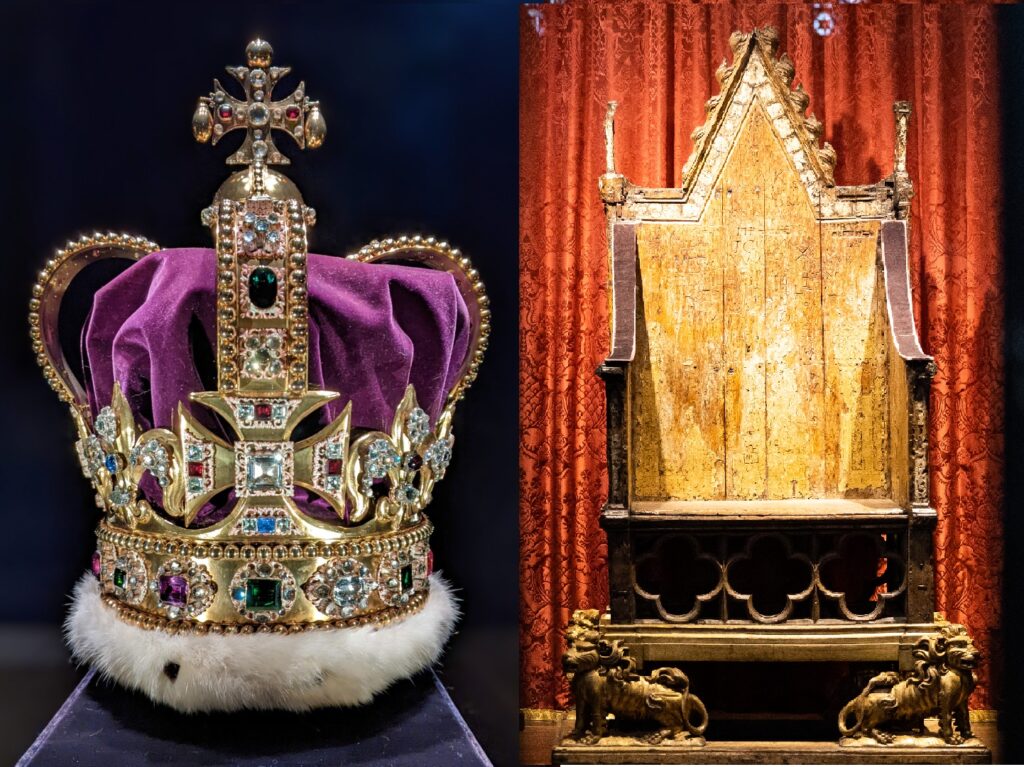
Additionally, the Coronation Chair, which has been used at coronations since 1308, is also known as St Edward’s Chair.
It might have been named after him because the king who built the chair – Edward I – was himself named after Edward the Confessor!
HE CAUSEd THE BATTLE OF HASTINGS
The death of Edward the Confessor in January 1066 started a year of turmoil.
He had no children and promised the throne to two different people.
Enter Harold Godwinson (his wife’s brother) and William, Duke of Normandy (his cousin).
Harold was the Witan’s choice, and he was crowned the last Anglo-Saxon king, on the very day of Edward’s funeral.
But William thought the throne was his and wasn’t willing to give it up.
This led to the infamous Battle of Hastings, resulting in the death of Harold, the crowning of the first Norman king (William the Conqueror) and the end of Anglo-Saxon rule.

Maybe Edward should have been a bit clearer!
What was your favourite fact about Edward the Confessor? Did anything surprise you? Pop it in the comments below!
WHAT TO READ NEXT
If you enjoyed this not-so-romantic blog then here are some others you might want to read next:
